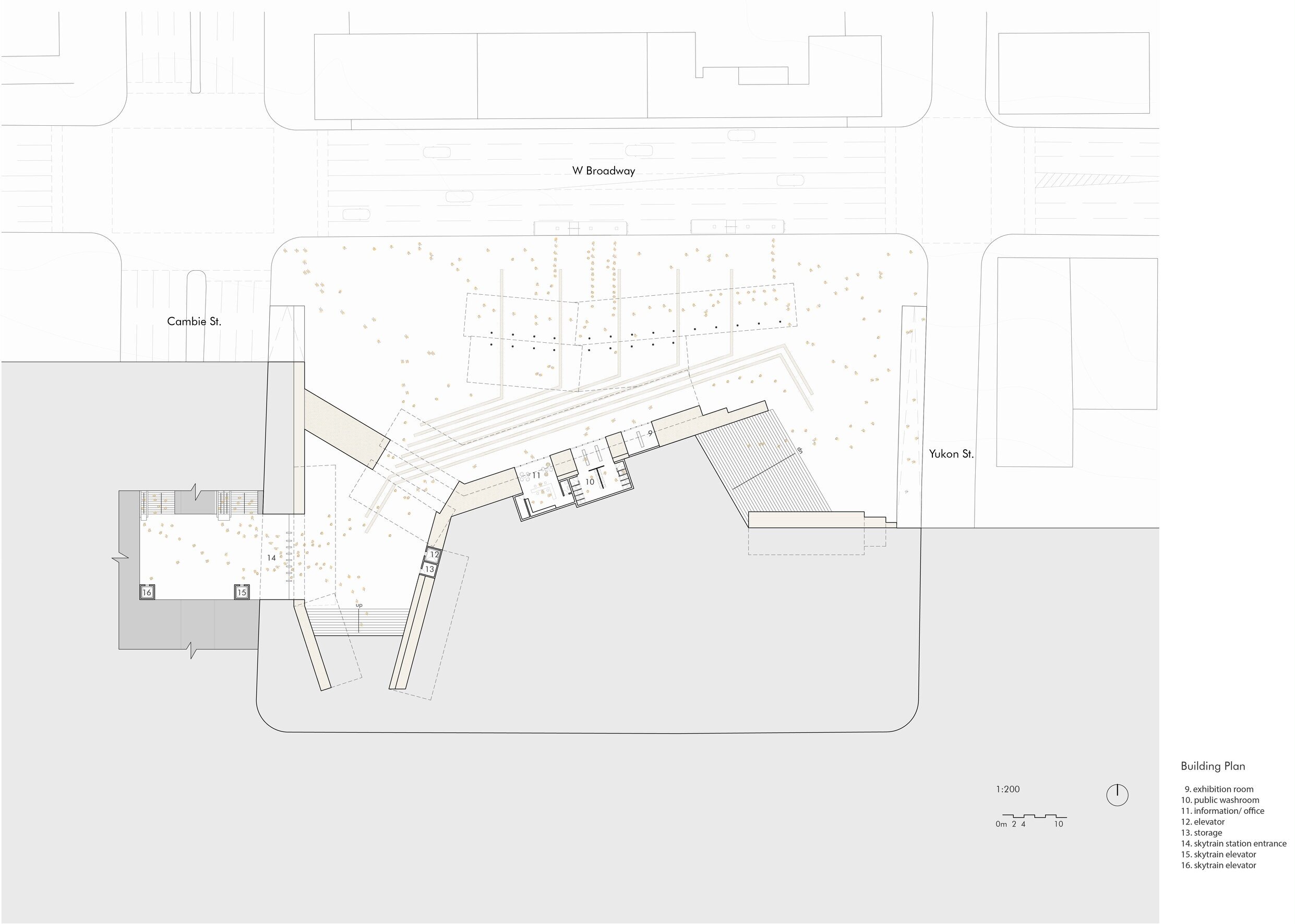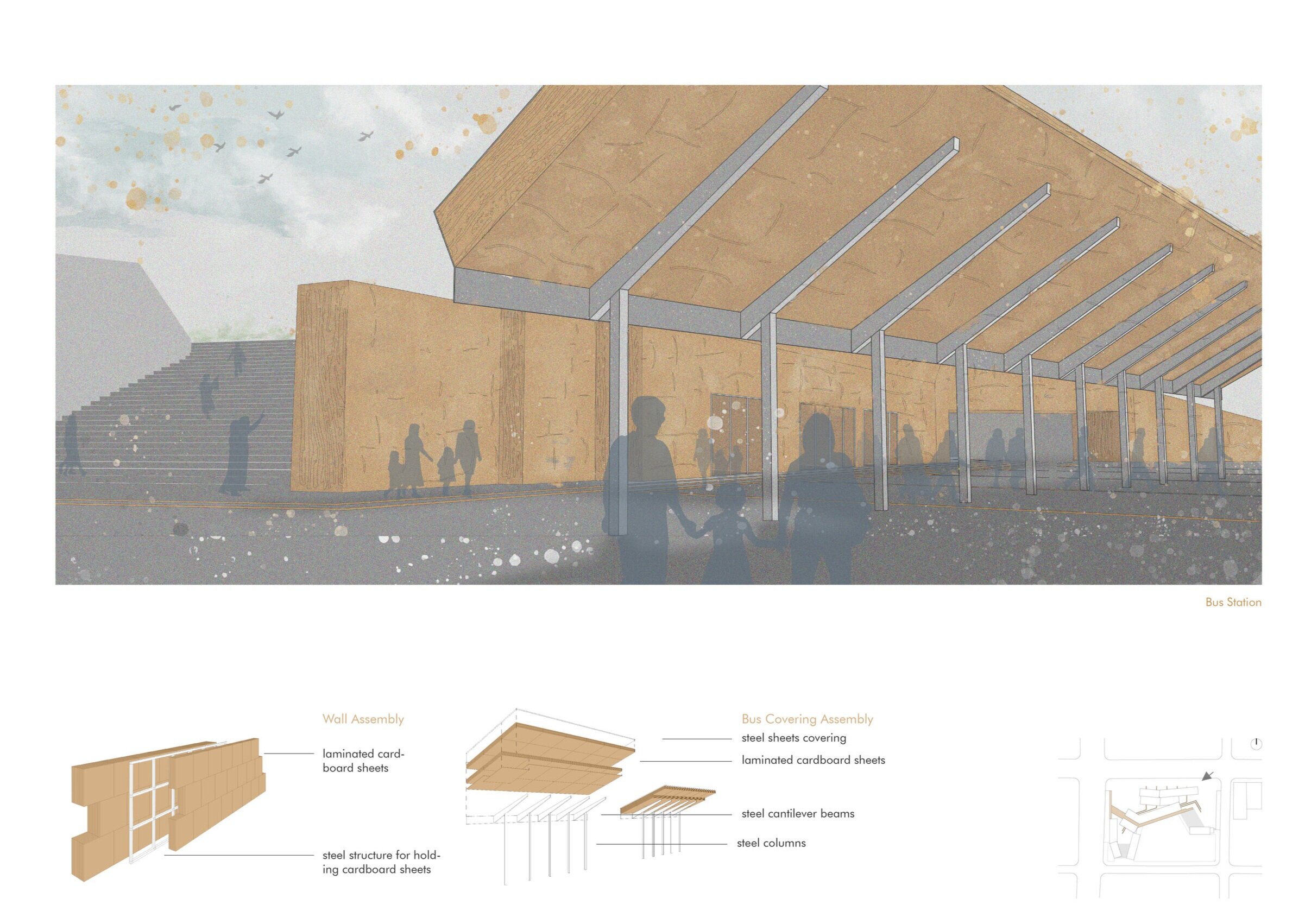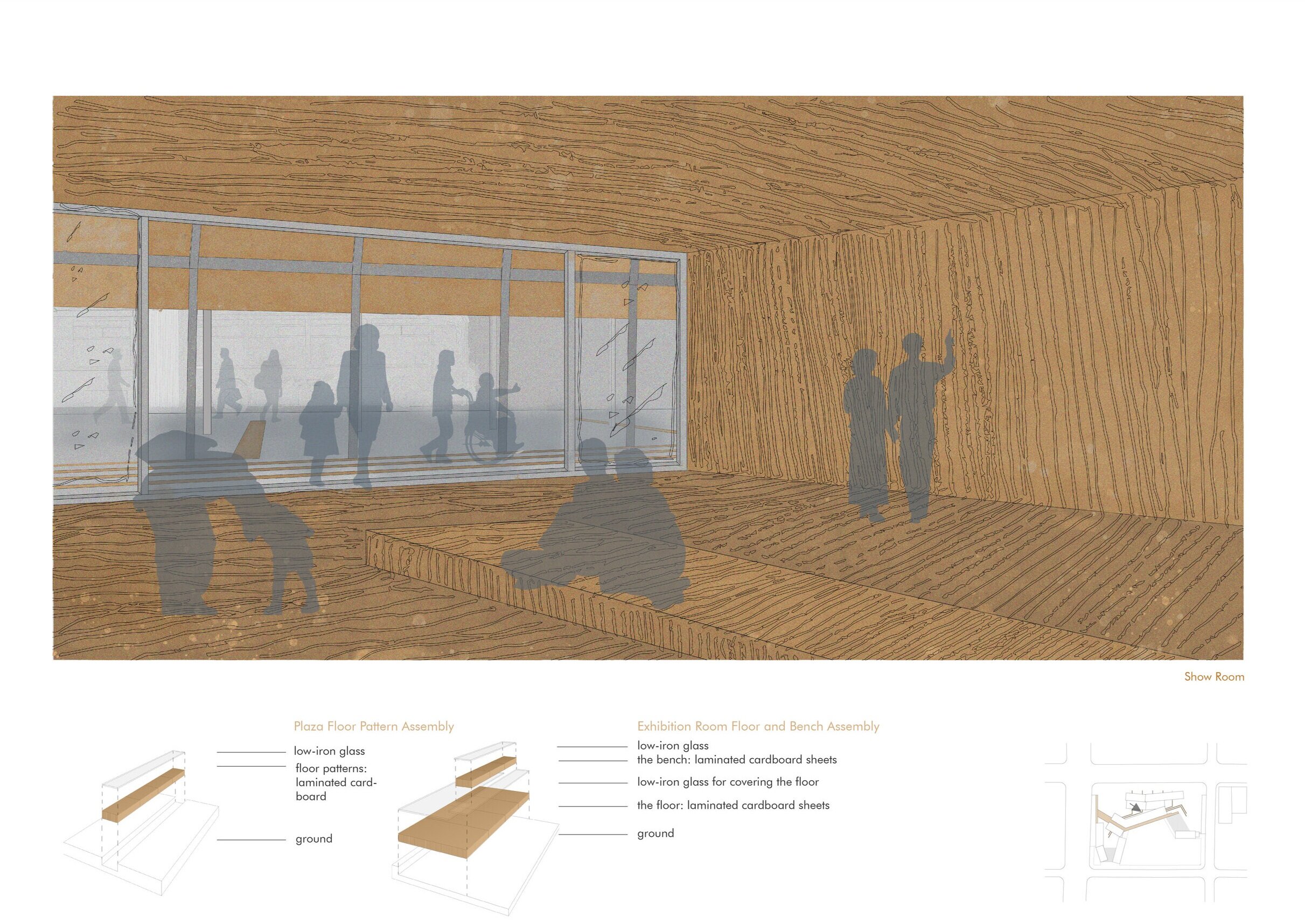cardboard crossing
2020

initial sketch

sketch plan

cardboard processing diagram

site plan

building plan

bus shelter

show room

bridge
As a direct consequence of our globalized world, corporations and governments have encouraged increased consumption among populations they have new access to. As consumption has grown, so too have the chains of production and distribution. In fact, this global market has become, in many ways, overgrown. Systems and structures like overconsumption, fast-fashion, and online purchasing have become part of a larger system that, while benefiting some people, causes negative outcomes for many others.
And as consumers, we often turn a blind eye to the environmental cost of online retail and distribution, particularly when it comes to the way we package and deliver objects. No matter if it is for product protection or making an item appear more attractive, lots of products nowadays are like nesting dolls, covered by layers and layers of packaging.
While we think of cardboard as an environmentally ethical choice, this evaluation overlooks some important fact. “around 80% of all products sold in United States and the EU are packaged in cardboard”. “cardboard and paper make up around 41% of solid waste streams.”
This project examines the issue of “over-packaging” and waste material within the urban context. By upcycling cardboard, which is often thought of as a weak or vulnerable material, we can turn it into a strong building material. By deploying the project in a central hub of the city, and in front of Vancouver’s city hall, the design forces people to confront and rethink their relationships with waste and consumption, and their effects on the environment.Moving through this space, then, people can become absorbed in a world created of the waste material they generate daily, which is critical to the future reduction of packaging use and to nurture a zero waste dialogue in public forums. In turn, the plaza and public transportation stations I have designed act not only as transition points for commuters, but also as an exhibition of the material and issues of “overconsumption” and “over-packaging”.
The final design uses the edge condition strategy that the cardboard structures act as the main crossing of the whole site. The roof of the skytrain entrance acts as a bridge that connects the sidewalk on cambie street to the higher-level lawn. From the skytrain station to the bus stops, cardboard patterns on the ground and on the roof of the structure and the bus shelters lead people’s way as they navigate the plaza. The cardboard structure sits at the edge of the landscape, but is also integrated into the landscape. The roofs create this half enclosure and half open space, protecting people from rain and sun, and hugging them in shade.
